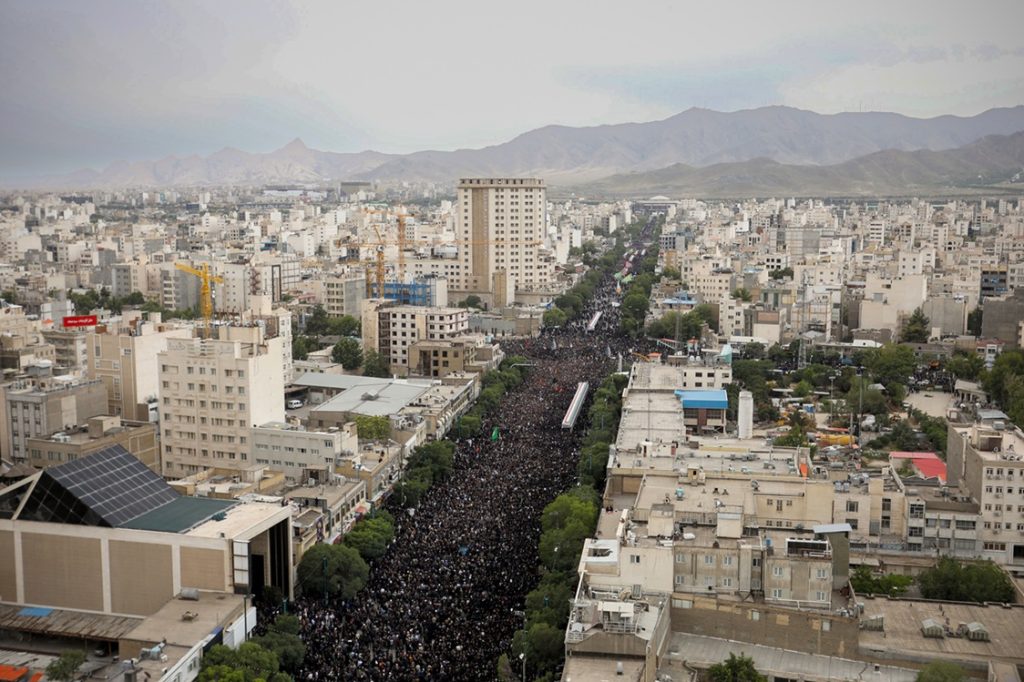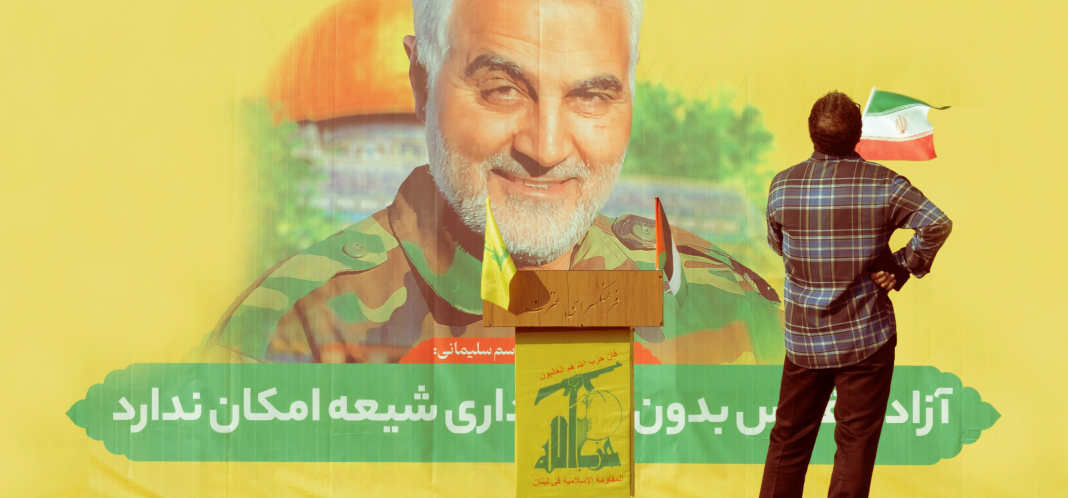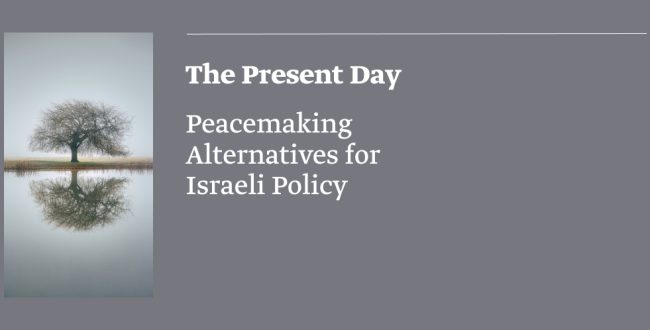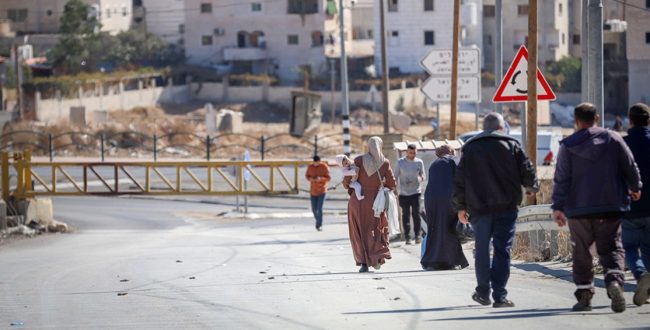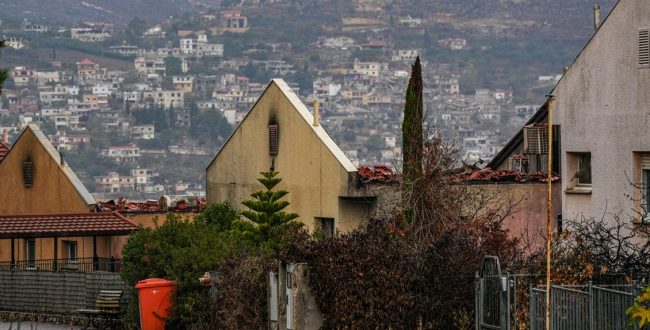The common assumption in Israeli discourse is that during the past year, Israel was engaged in a defensive regional war against Iran. According to this logic — shared largely by the country’s Western allies —Iran’s goal is to destroy Israel, and to that end, it operates a multitentacled “octopus”, with its head in Tehran and arms extended across the region: Sunni Hamas in Gaza, Shia militias in Iraq, the Houthis in Yemen, and above all, Hezbollah in Lebanon.
These groups surround Israel in what is referred to as a “Ring of Fire,” a term attributed to Qassem Soleimani, Commander of Quds Force, who was responsible for Iran’s regional activities until his assassination in a U.S. airstrike in Baghdad in 2020.
Although Suleimani has probably never used this phrase, its meaning in Israeli discourse is important, as it suggests that the war against Hamas in Gaza is merely the first part of a regional war for Israel’s very existence. The “Ring-of-Fire” narrative is thus considered a realistic warning about the true forces at play.
However, this narrative is dangerous, not only because it focuses on a peripheral aspect of the Israeli-Palestinian conflict — regional relations —but because it is becoming a self-fulfilling prophecy.
The “Ring-of-Fire” narrative appealed to many because it provided a logical, respectable framework for the ongoing suppression of the Palestinians. Netanyahu did not invent this story, but over the years, he has become its most convincing teller
Ring of Fire: The Power of a Narrative
From an ideological standpoint, the power of the “Ring-of-Fire” narrative comes from providing Israel’s center-left and its Western allies with a justification for the essence of the status-quo in Israeli-Palestinian relations: the continued Jewish supremacy, and in particular, the occupation of the West Bank, and now Gaza once again. These relations are not a “war” in the conventional sense, but a military occupation of a civilian population.
The October 7 attack, with all its brutality and military sophistication, only serves to prove this point: Hamas could carry out a single large-scale terror attack, which was a gamble on everything. In this attack, the Palestinian guerrilla army was sacrificed, along with the entire population of Gaza, on the altar of bringing the Palestinian issue back to the global table.
These unequal power relations have long placed Israel in a difficult position: the occupation regime in the West Bank and Gaza has divided Israeli society, weakened the military, and undermined Israel’s international standing. The “Ring-of-Fire” narrative appealed to many in Israel and the West, because it provided a logical, respectable framework for the ongoing suppression of the military-less Palestinians. Benjamin Netanyahu did not invent this story, but over the years, he has become its most convincing teller.
One of the things that the year of (not quite) war in Gaza have proven is that Netanyahu was never genuinely concerned with the Iranian nuclear issue and that it was a cover story, with the main goal being the preservation of the occupation regime. Had this not been the case, Israel should have done everything in its power to restrain the attack on Gaza, and to form the much-vaunted regional alliance with Saudi Arabia to protect itself from Iran.
To resolve this contradiction, proponents of the occupation of Gaza explain that, somehow, this is not the attrition of besieged Palestinians, but actually a war against a tentacle of a distant octopus.
This narrative is wholeheartedly supported by the opposition to Netanyahu – including centrist politicians such as Benny Gantz and Yair Lapid, and Avigdor Liberman – and it dovetails with Western interests in the Middle East. From the standpoint of Israel’s ineffective opposition, if Netanyahu is to be blamed for anything, it is exactly his lack of willingness to engage in a straightforward confrontation with Iran.
This discourse about the so-called Iranian existential threat has become hegemonic in Israel thanks to two key features of Israeli political culture, that only seem contradictory: militarism and liberalism.
Over the past 20 years, the IDF has served as the engine of Israel’s thriving cyber industry… Iran served as a worthy opponent for young Israeli programmers
After the 1973 war and the signing of the Camp David Accords with Egypt, Israel’s strategic balance of power shifted, as effectively it was no longer under a serious threat by a regular Arab army. Netanyahu’s brinkmanship with Iran aligns with the interests of the IDF and the Israeli security apparatus of finding meaning (and money) in a less-threatening environment.
Over the past 20 years, the IDF has served as the engine of Israel’s thriving cyber industry; in the words of Israeli national security scholar Dima Adamsky, “One of the main sources of the success of the INCD ]Israeli National Cyber Directorate[ was an ability to capitalize on the graduates of the most prestigious military-technological higher education programs of the IDF”.
Iran served as a worthy opponent for young Israeli programmers. Preparing for a mission in Iran also provided a fresh raison d’être for the rival-less Israeli Air Force.
Israel’s Iran-angst has another fertile ground on which to flourish: Israel’s liberals, for whom Iran is an enemy of symbolic significance. Israeli historian and Iran scholar Haggai Ram has argued that Israelis invoke the Iranian regime as a symbol of the irrationality and religious fanaticism prevalent in the Middle East. At the same time, Israeli liberals also see “Iran-ness” in the internal threat posed by the religious-Jewish Other.
It is very common in Israeli progressive or liberal circles to warn that Israel might turn into an Iran, in view of the danger of a theocratic regime sponsored by Israel’s ultra-Orthodox Jews. Thus, a conflict with Iran is often justified in Israel’s liberal discourse as an enabler of liberalization in the region as whole.
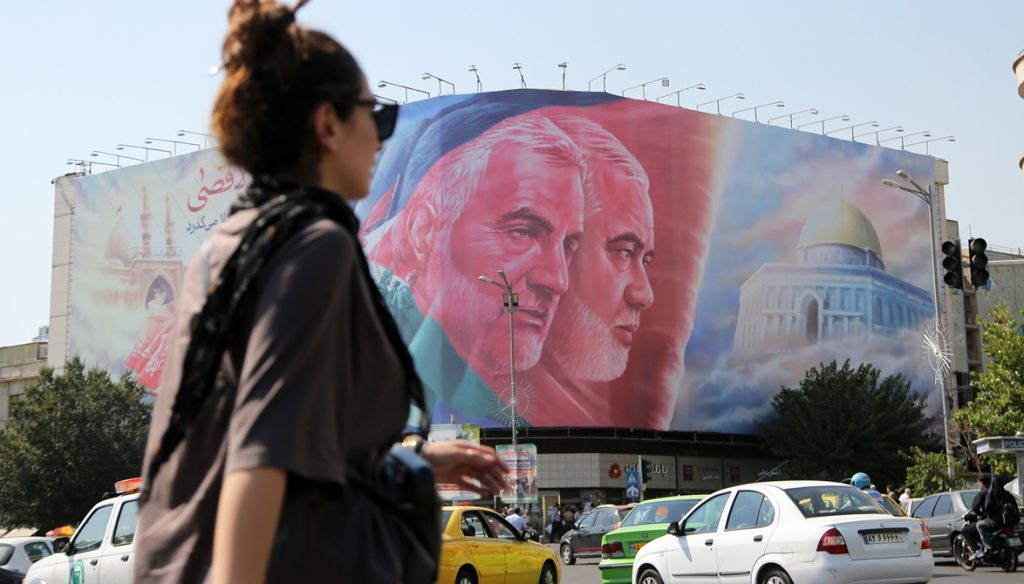
Militarism and liberalism are therefore two components of Israeli political culture that help justify the regional conflict. Former Prime Minister Ehud Barak is theencapsulation of this contradiction par excellence —
On the one hand, a staunch opponent of Netanyahu and a welcome figure in American liberal circles, but on the other hand, someone who would usually grab the opportunity for high-end military maneuvering to reshape the region. Barak was in cahoots with Netanyahu in 2011-12 when the two threatened to bomb the Iranian nuclear project. In this sense, Barak is also a projection of American policy, who preaches in liberalese but practices hawkism when it comes to the Middle East.
The Iranian leadership views nuclear weapons as a deterrent, a means of ensuring that no foreign power would try to overthrow the regime. A shield in other words, not a sword
Iran’s Ambitions: More than a Conflict with Israel
To fully explain the Israeli discourse of extermination, we must address Iran’s role in the plot. If an alien had landed on planet Earth and listened only to speeches by Netanyahu from the last 15 years or so, he would have gotten the impression that Iran was developing nuclear weapons for the sole purpose of throwing an atomic bomb on Israel. As recently as several weeks ago, in fact, he told Elhanan Danino, a bereaved father whose son had been executed by Hamas in captivity: “It’s an atomic bomb they want to drop on all of us here”.
Iran scholars usually emphasize that the nuclear program has been, from its inception, an instrument of regime survival and stability. According to Ray Takeyh and Shahram Chubin, the shift in Iran’s nuclear policy began in the summer of 2002. On August 14, opposition sources reported to the International Atomic Energy Agency (IAEA) that Iran possessed a secret uranium enrichment facility in Natanz, in addition to the known reactor in Bushehr (for details, see Chubin, pp. 16-20).
The timing was probably related to the American preparations to invade Iraq. The preparations for the American attack on Iran’s strong and close Arab neighbor, along with the earlier invasion of Afghanistan, threatened to surround Iran with a ring of American fire.
The Iranian leadership views nuclear weapons as a deterrent, a means of ensuring that no foreign power would try to overthrow the regime. A shield in other words, not a sword. This is not to downplay the potential danger of a second nuclear power in the Middle East, but it does mean that the country’s nuclear program is not as directly tied to Israel’s annihilation as Netanyahu’s rhetoric might suggest.
During the years since the American invasion of Iraq, the Iranian nuclear program has evolved into a vessel for various strategic purposes. Today it is mostly used as an instrument to counter the sanctions imposed by the United States and the international community since the 1979 revolution.
Our colleague Lior Sternfeld of Penn State University recently conducted an interview (Hebrew) with Naser Bajoghli and colleagues, who published a thorough research on the impact of 45 years of sanctions. The sanctions, they suggested, never contributed as hoped to the regime’s collapse or even to a political shift toward liberalism. Instead, they strengthened conservative forces such as the Revolutionary Guards.
Iran’s is indeed an authoritarian regime. According to Amnesty International, in 2023, Iran was the largest contributor to global executions with 853 — likely mostly for drug offenses
The nuclear threshold Iran has maintained for two decades is both a stick and a carrot when negotiating the lifting of sanctions. This was the essence of the 2015 nuclear agreement: Iran would delay uranium enrichment and agree to international nuclear oversight for 10-15 years in exchange for economic relief (we have discussed the agreement extensively here (Hebrew) and here). In other words, the further Iran distances itself from a bomb, the more international connections it hopes to gain.
This is why Netanyahu was so opposed the agreement that he led the Trump administration out of it, even to the dismay of the IDF. As Sternfeld argues, a more open Iran is bad for the Netanyahu doctrine of fomenting regional conflict.
Questioning Iranian Fundamentalism
Our criticism of Netanyahu’s doctrine of fomenting regional conflict to cover up the local one is no to suggest that the Iranian regime proposes a just, attractive option for its constituency. Iran’s is indeed an authoritarian regime. According to Amnesty International, in 2023, was the largest contributor to global executions with 853 (likely mostly for drug offenses), out of a total of 1,153 executions worldwide. This is in addition to its well-known persecution of political opponents.
An example is the story we recently covered in Hebrew about rapper Toomaj Salehi, who had been in and out of prison in recent years for his dissident songs and was eventually sentenced to death. Note that so far, Salehi has not been executed. The Supreme Court overturned the death sentence, ordering a retrial and his release on bail. This retreat by the regime was made possible because Salehi became a flagship case for the reformist camp.
Salehi’s case refutes the claim that Iran operates as a fundamentalist regime, one whose ideology cannot be negotiated. It is more accurate to depict Iran as a revolutionary regime capable of accommodating reforms—meaning it engages in internal negotiations, albeit slowly and in a controlled manner, to adapt its ideology to the realities it faces.
This pragmatic approach is evident even with regard to issues dear to Jewish and Christian traditionalists as well. For example, in the 1990s, faced with a population explosion, Iran ran a successful family planning campaign, that encouraged contraception use and liberalized abortion laws in what was considered one of the world’s most successful campaigns of this kind. Within a few years, the birthrate dropped from six to 1.7 children per family. This sort of approach is much less imaginable in the anti-abortion American context.
Iran’s allies in the region are not tools for achieving regional hegemony. Instead, they are insurance policies, protecting the regime against external threats
The primary arena for the struggle between conservatism and reform in Iran is the elections, which are held among candidates approved by the Supreme Leader. The recently elected Masoud Pezeshkian (whom we profiled in Hebrew) is a distinct representative of the reformist camp.
After the death of conservative president Ibrahim Raisi’s in an helicopter crash on May 2024, conspiracy theories circulated in Iran about the involvement of Israel, the U.S., or even rivals within the Revolutionary Guards. In retrospect, a fitting conspiracy theory would argue that Iran’s regime itself assassinated the unpopular Raisi to appoint a more reformist leader, who would improve Iran’s global image and ease the pressure on liberal protesters within Iran at a perfect moment, when Israel is struggling both domestically and abroad.
The critical takeaway from this review of Iran’s politics is not only that Iran is ruled by a pragmatic regime capable of reform, but that unlike Israel’s, Iran’s external interests are distinct from its internal ones. Iran’s primary interest is to preserve its Islamic regime through internal negotiation among its various power factions. External measures, such as its nuclear threshold policy and cultivation of regional allies, serve to maintain the regime but are not part of the grand goal of “exporting the revolution” or achieving regional hegemony in the manner of the Cold War blocs.
Iran’s allies in the region are not tools for achieving regional hegemony (or as Netanyahu puts it, the destruction of Israel). Instead, they are insurance policies, protecting the regime against external threats (whether the U.S. or Israel). Each ally uses Iran’s resources for its internal needs—whether in Lebanon, Yemen, Iraq, or Gaza—while willing to pay the price of protecting and supporting each other as part of this package deal, but carefully, without risking too much internal damage. This is why, for example, Iran and Hezbollah did not join forces with Hamas on October 7, and why, a year into the war, they try to control fire, in a policy that can only be described as limited solidarity with Hamas.
The Clock in Tehran’s Palestine Square
With all its calculated approach, however, Iran is a regional power, one that Israel has not confronted since the 1970s. Karim Sadjadpour aptly defined Iran’s power: “no country in the Middle East has Iran’s combination of geographic size, human capital, ancient history, and vast natural resources”.
One of the great successes of the Islamic Revolution has been the development of human capital through education. In the early 1970s, Iran had an illiteracy rate of over 50%, which has since dropped to zero. Iran is also a regional empire of higher education, with a postsecondary education rate of about 72%, double the global average and higher than countries such as Italy, Japan, and Canada.
Aside from Israel, Iranian universities are the leading institutions in the Middle East, especially excelling in the exact sciences.
This development of human capital has enabled Iran to become a drone superpower in recent years, producing models such as the Shahed 129 and Mohajer 6. These are not sophisticated weapons, but they are effective and cheap, around $20,000 per unit. Their primary advantage is their ability to attack in swarms and under the radar.
Similarly, Iran’s nuclear program, unlike those of Iraq and Syria beforehand, is an independent project, making Israel’s assassination campaign against its scientists ineffective. In a realistic war scenario, even the U.S. could only inflict severe damage on Iran but not topple the regime or conquer the country as it had done in Iraq and Afghanistan.
While Israel does not have a Supreme Leader in principle, in practice its Prime Minister has been in office for about as long as Ali Khamenei
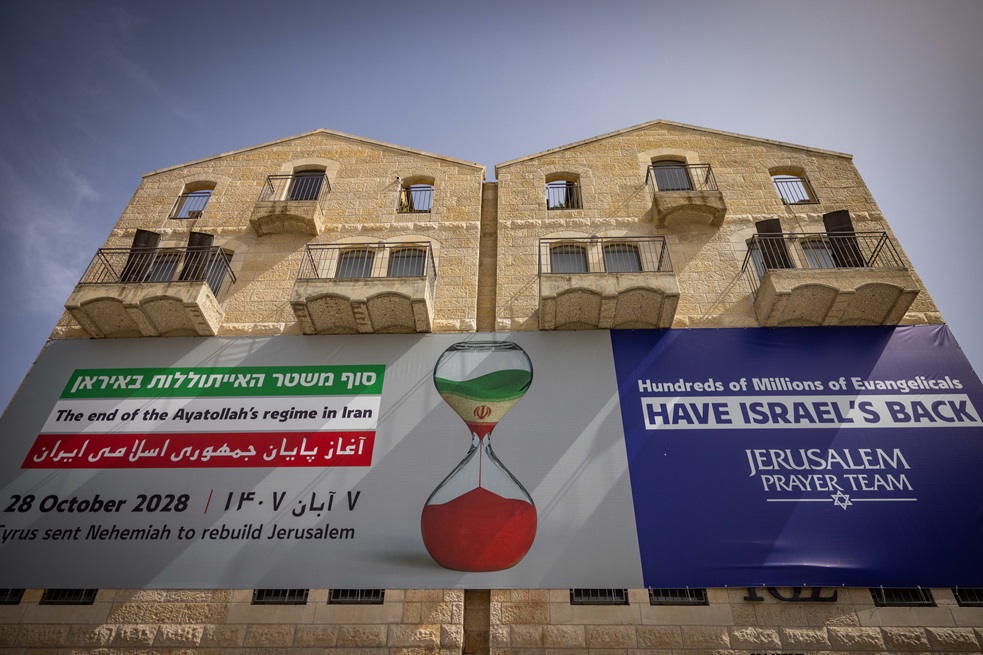
Is this regional power ultimately aimed at the annihilation of Israel? We propose to answer this question through a street performance by the Revolutionary Guards in Tehran in 2017: they installed a timer in Palestine Square, counting down to the end of Israel in 2040. This performance drew some attention in Israeli media, and together with militant quotes of Iranian leaders, it served as proof of the regime’s annihilationist intentions.
A more nuanced look at this performative act would reveal that it is not a plan, but rather a warning: if Israel continues along its current path, it is more likely to slowly deteriorate, rather than collapse.
Thus, when Netanyahu justifies the continuation of the war by the threat of annihilation by Iran, he is in fact placing his country in a state of chronic illness that will make it deteriorate on the long run. Iran (through Hezbollah) has effectively taken over territory in northern Israel: tens of thousands of Israelis have been evacuated from there and cannot return. Israel is also under a partial naval blockade through Iran’s allies in Yemen.
Israel’s global standing has deteriorated to an unprecedented low, jeopardizing the defensive alliances it needs to face Iran. And on top of all that, an economic crisis is looming. This is the self-fulfilling prophecy enshrined in Netanyahu alarmist discourse of annihilation. It is worth recalling the billions that the State of Israel, under Netanyahu, had invested in confronting the distant enemy—all of which have proven worthless against a few dozen Hamas pickup trucks.
Twin Regimes
One way to better understand what Iran wants lies in highlighting the growing similarity of the two adversaries:
Both Iran and Israel are religious and ideological regimes. Both like to hint at their nuclear weapons, whether stored in warehouses or looming in the horizon. These days, the Israeli police are becoming something of a “Revolutionary Guard,” that is, an organization meant to protect the regime’s ideology rather than serve society as a whole. While Israel does not have a Supreme Leader in principle, in practice its Prime Minister has been in office for about as long as Ali Khamenei.
The assassination of Yitzhak Rabin by a Jewish extremist in 1995, which ushered in the seemingly endless Netanyahu era, could today be viewed as a “Jewish Revolution.”
Pointing out the similarities of the two regimes helps clarify that while they are indeed fighting each other, they are doing so to ensure their internal stability rather than as a primary strategy. Iran fears an external attack, which is why it nurtures its regional allies. Today’s Israel is intent on perpetuating its occupation project, with the external threat serving to justify or distract from this project.
Faced with Israel’s current war against Iran, a meaningful opposition would not promise victory in a destructive war but would instead use the recognition of Israel’s limited power to propose an alternative political project. Instead of warning that Iran is a more dangerous threat than the Palestinian one, the opposition to Netanyahu could present a more balanced outlook, linking the end of the occupation and Palestinian independence with de-escalation with Iran.
It could propose not a defense pact with the U.S. but rather the denuclearization of the Middle East. The options the Israeli opposition currently offers amount to a mere attempt to huddle in the ever-diminishing shadow of the Netanyahu era.
